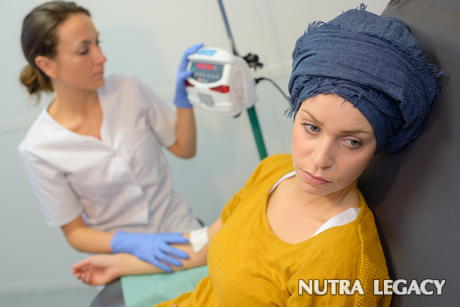Top 10 Types of Chemotherapy
- Various types of chemotherapy options are available for those suffering from cancer. The chemotherapy drug is geared to destroy the growth and DNA replication of cancer cells and provide successful outcomes to the life of the patient
- For women, ovarian chemotherapy and chemotherapy for breast cancer provide treatment options for ovarian and breast cancers
- Some types of chemotherapy, like adjuvant chemotherapy and cisplatin chemotherapy, can be used post-surgery to kill off any remaining cancer cells
- More aggressive types of therapy like mesothelioma chemotherapy and colorectal chemotherapy are designed to increase the patient’s quality of life
There are various types of chemotherapy in the treatment options of cancer. Some of the more general and targeted types of chemotherapy as well as some of the side effects of chemotherapy are as follows:

1. Adjuvant chemotherapy
Adjuvant chemotherapy is a type of chemotherapy that is administered after the cancer has been surgically removed. This type of therapy is used to kill off any remaining cancer cells that may exist following surgery. This type of chemotherapy can also kill off any missed cancer cells that could have been overlooked during surgery.
2. Mesothelioma chemotherapy
Mesothelioma chemotherapy drugs are administered to ultimately destroy any and all cancer cells. Neo-adjuvant chemotherapy may be given to shrink any existing tumors prior to surgery if needed. Adjuvant chemotherapy may be used if surgery is necessary to remove any missed cancer cells following surgical procedures.
3. Alkylating medications
Alkylating medications are commonly used in chemotherapy for breast cancer. This type of treatment blocks DNA replication and prevents the spread of cancer cells. The chemotherapy drug is used in treating breast cancer, ovarian chemotherapy, and even lung cancer.
4. Cisplatin chemotherapy
This type of chemotherapy treatment is used to treat bladder, lung, stomach and some ovarian cancers. Common side effects tied to cisplatin chemotherapy are nausea, vomiting, and even nerve damage in the hands and feet. Some hearing loss may also occur.
5. Ovarian chemotherapy
Ovarian cancer is highly sensitive to chemotherapy treatment and as a result tumors will disappear and shrink with therapy. Drugs can be given orally as tablets or by injection.
6. Colorectal chemotherapy
This type of chemotherapy treatment is used to treat the colon and rectal area known as the colorectal region. Success rates are low but colorectal chemotherapy can increase quality of life and even prolong life from the median 6-9 months to up to 5 years.
7. Plant alkaloid therapy
Many plant alkaloids are derived from various shrubs and herbs and have become highly effective in the treatment of various types of cancer. Plant alkaloids can actually destroy the cancer cells without causing chemotherapy patients extensive and upsetting side effects. Plant alkaloids offer a more natural approach in the fight against cancer.
8. Anthracyclines
This type of chemotherapy interferes with DNA reproduction and replication of the cancer cells. Some of these chemotherapy drugs are so effective that they are used to actually cure various types of cancer. These anthracycline drugs include mitomycin and bleomycin.
9. Topoisomerase inhibitors therapy
This therapy treatment controls the exploitation of the DNA structure in the cell. The side effects can be dramatic but this is an effective means to battle the cancer cells and disrupt their growth. Inhibiting growth is necessary in overcoming cancer and by choosing the most effective chemotherapy drug, success rates increase.
10. Anti-tumor antibiotic therapy
Anti-tumor antibiotics provide a more natural approach and are administered during various phases of the cell cycles of cancer. These types of chemotherapy drugs come from more natural products extracted from the fungus in soil streptomycin. The side effects of chemotherapy are less harsh with the more natural antibiotic therapy options.
The information supplied in this article is not to be considered as medical advice and is for educational purposes only.
|
| ||||||||||||||





 21 Sep 2009
21 Sep 2009